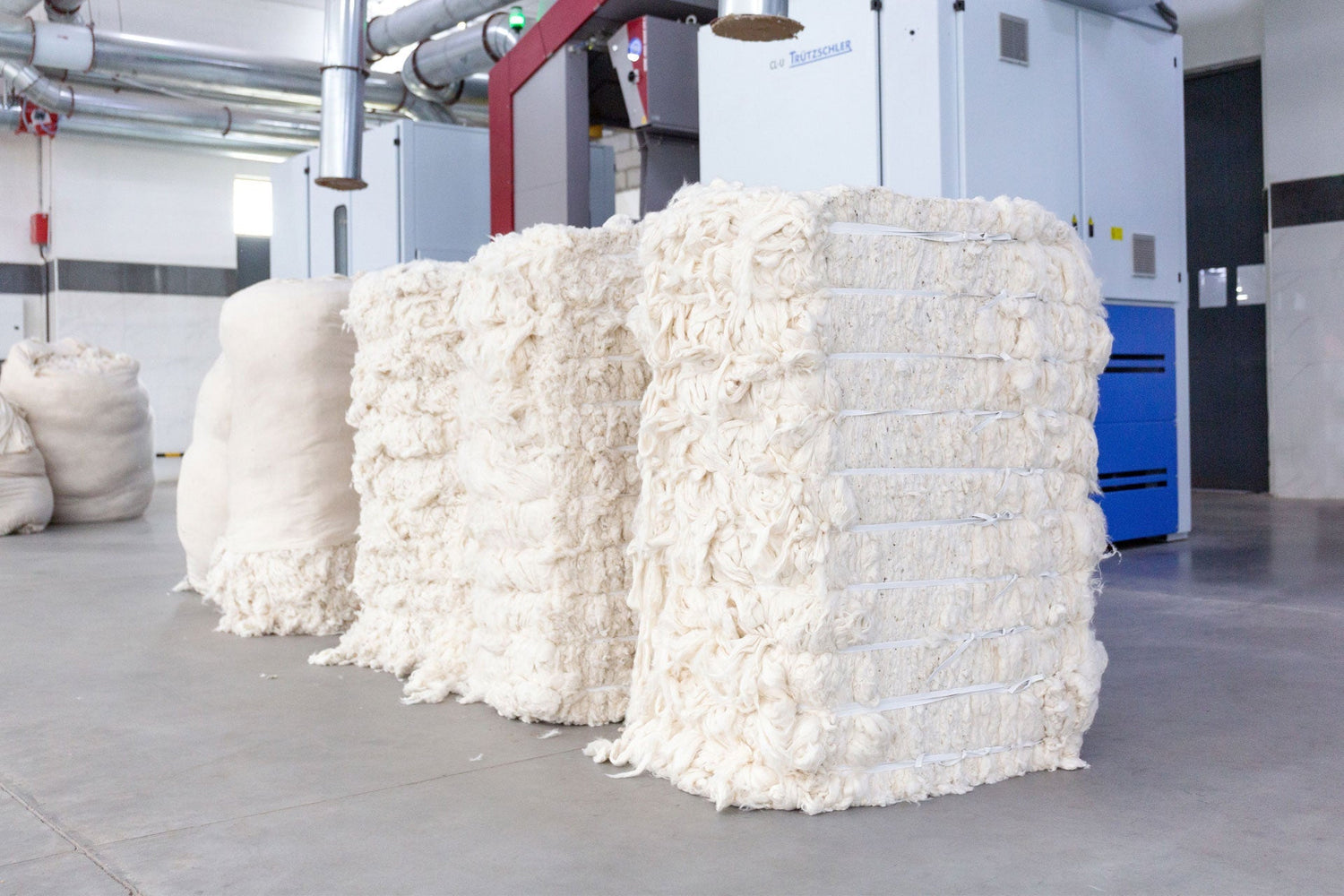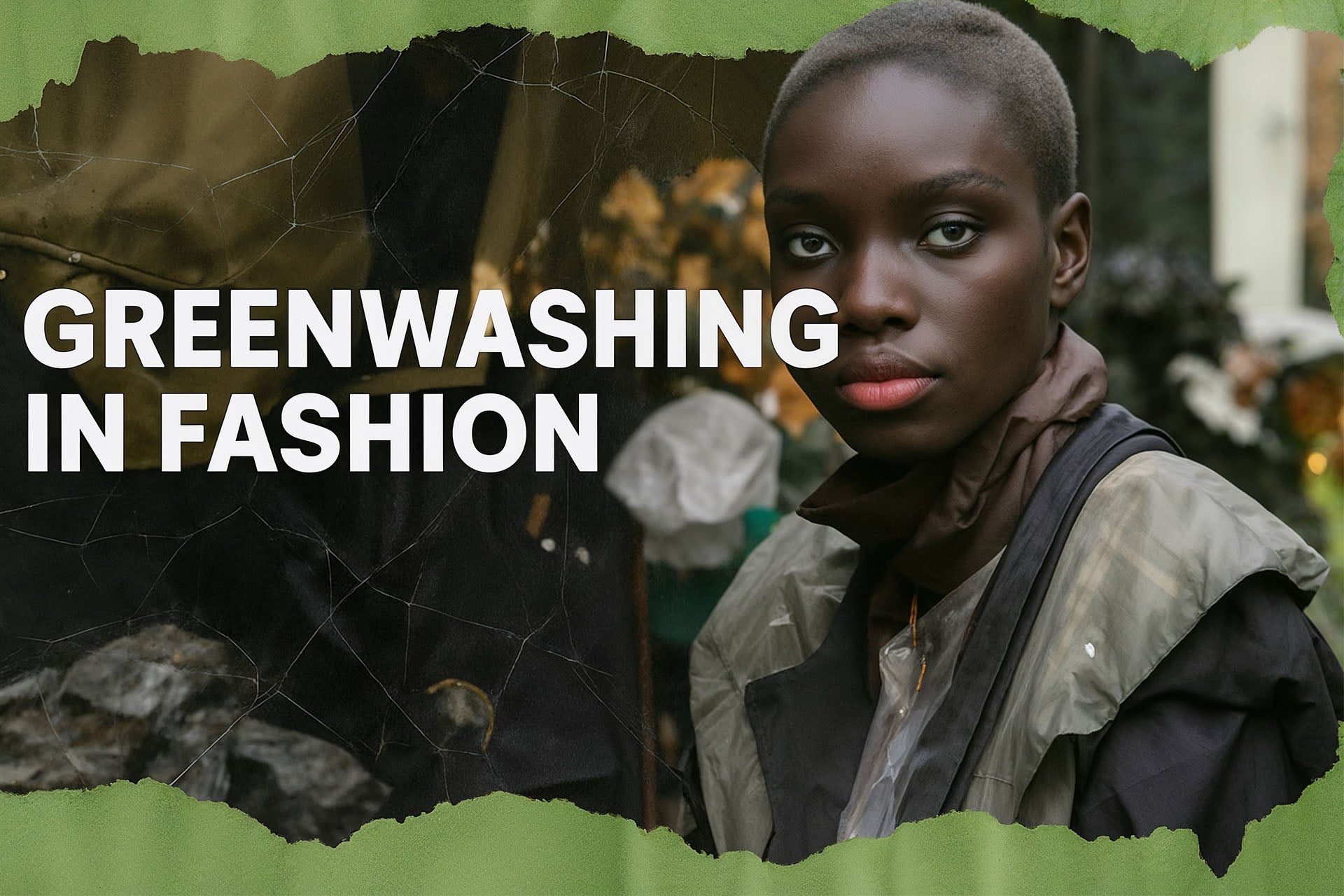At Pomp Clothing, we believe fashion should never come at the expense of people or the planet. As the fast fashion industry continues to churn out cheap, disposable clothing at breakneck speed, it's never been more important to understand what we’re really buying and what the alternatives are.
It is said that the term “fast fashion” first entered the lexicon when Zara opened up its stores in the early 1990s. At the time, the New York Times described Zara’s mission to take only 15 days for a garment to go from the design stage to landing in stores as “fast fashion”.
Although it might seem like fast fashion has been the dominant way of operating since forever, the history of sustainable fashion would suggest otherwise. Economic necessity may have brought about historic zero waste lifestyles: we’ve previously written about flour sacks being used for aprons during the time of the Great Depression. Such historical examples remind us that sustainable practices aren't new; they've long been a natural response to economic constraints. This helps to highlight how resourcefulness once guided our relationship with clothing, in contrast to the wastefulness of fast fashion currently.
Beyond these practical reasons, there have also been ethical reasons for why people have adopted sustainable lifestyles with sustainable clothing forming part of the solution. Some of these relate to climate change or more specific and often related symptoms such as agricultural challenges, animal welfare as well as human welfare in the form of the labour force.
We can understand why by looking into the key differences between fast fashion and sustainable fashion. This will help you make better-informed choices about what you wear and why it matters.
1. Fast Fashion Production: Quantity vs Quality in Sustainable Clothing
Fast fashion: Built on mass production, fast fashion thrives on speed and scale. Clothes move from design to shop floor in a matter of weeks, encouraging constant consumption. Most items are designed to be worn only a few times. As noted above, Zara’s mission has been to get a garment from design stage to stores within 15 days.
Sustainable fashion: Prioritises longevity over volume. Brands focus on creating timeless designs that last for years, not weeks. Production is slower and often more localised, allowing for better oversight and accountability. At Pomp, we have opted for an on demand approach to manufacturing (via our suppliers) to reduce waste.
This fundamental difference shapes the rest of the industry. Fast fashion’s obsession with turnover leads to overproduction and oversupply, while sustainable fashion operates with intention and restraint and therefore less waste.
2. Synthetic Fabrics vs Sustainable Fibres: Why Material Matters
Fast fashion: Predominantly uses synthetic fibres like polyester, which are derived from fossil fuels. These materials emit up to four times more carbon per kilogram than cotton and are not biodegradable. According to the European Environment Agency, microfibres from synthetic fabrics generate 16-35% of microplastics going into our oceans.
Sustainable fashion: Prioritises low-impact, natural or recycled materials such as organic cotton, TENCEL™, and deadstock fabrics. These fibres require fewer resources and avoid the toxic by-products associated with synthetics. Pomp uses certified organic cotton (certification is held by our supplier). This means we use natural, organic fibres that are free from toxic pesticides and fertilisers. The inks we use are water-based, biodegradable, contain no animal products, and are not tested on animals. All of our ink ingredients are tested to OEKO-TEX 100 standard.
In short, fast fashion relies on cheap, destructive inputs. Sustainable fashion aims to minimise environmental harm by choosing materials more carefully.
3. Fair Labour Practices vs Exploitation: Ethical Fashion Explained
Fast fashion: Garment workers, mostly women, often work in unsafe factories, earn below living wages, and are denied basic rights. To combat the risk of big brands outsourcing production to low-cost suppliers with little oversight, Human Rights Watch formed a coalition (in 2016) with eight other organizations and global unions to make supply chain transparency a norm in the industry: they developed a standard called the “Transparency Pledge”. While this is increasingly used, there is still a long way to go.
Sustainable fashion: Seeks to uphold fair wages, safe conditions, and worker empowerment. While not perfect, ethical brands often build direct, transparent relationships with factories and artisans. In Pomp’s case, employees are paid in line with the living wage as defined by the Global Living Wage Coalition, as standard. Our supply chain is SA8000 certified for modern and ethical working conditions all throughout.
This difference is moral as much as economic. Fast fashion exploits people to keep prices low: £1 bikinis anyone?!. Sustainable fashion invests in people as part of a long-term, values-led approach. When people ask “who makes my clothes?”, they are seeking to understand not only the story behind the brand but also the wellbeing of the individual(s) involved in the process.
4. Environmental Impact of Fast Fashion: Waste vs Sustainable Clothing Solutions
Fast fashion: Responsible for large-scale emissions and textile waste. Globally, a truckload of textiles is landfilled or burned every second (Ellen MacArthur Foundation).
Sustainable fashion: Aims to reduce waste through smaller runs, recycling initiatives, and circular business models. Brands encourage repairs, resale, and thoughtful care. Not only do we at Pomp have a print-on-demand approach, we also run a takeback scheme with our supplier which means once our clothes reach end-of-life, they can be returned to us to be recycled into new clothing, thereby avoiding the unfortunately traditional path to landfill.
Send clothes back to us by scanning the QR code in the care label of any clothing you buy from Pomp.
Fast fashion creates problems that sustainable fashion actively tries to solve.
5. Is Sustainable Fashion Worth the Cost? Long-Term Value vs Fast Fashion Waste
Fast fashion: Appears affordable, but encourages overbuying. According to the Ellen Macarthur Foundation, it’s reported that the average person wears a piece of clothing only 7 to 10 times before throwing it away. The hidden costs of these behaviours include environmental degradation, waste management, and public health concerns.
Sustainable fashion: Costs more upfront but lasts longer. It reduces the need for frequent replacements and supports local economies. There is some nuance in this in that synthetics are durable and that is one of the reasons they are selected alongside their lower cost. Sustainable fashion comprises multiple fabric options that have different characteristics which mean that they will work better in certain scenarios over others. The claim here over sustainable fabrics lasting longer is just as predicated on the wearer’s behaviour (opting wear more often and taking greater care with clothing) as it is on the fabric quality.
Fast fashion shifts costs onto society. Sustainable fashion redistributes value more equitably.
6. Mindful Fashion: How Sustainable Clothing Creates Meaningful Experiences
Fast fashion: Fuels impulse buying and trend-chasing. Many consumers report feeling little connection to their purchases. This is not a surprise when there is a new trend every week: we’ve previously written about how there are now apparently 52 micro-trends per year i.e. a new collection each week.
Sustainable fashion: Encourages mindful purchasing and deeper appreciation. It turns clothing into something meaningful in that pieces are investments, not placeholders in your closet. We mentioned earlier about our takeback scheme and circular principles but at Pomp we also like to convey the effort that goes into making our clothes and our wish that they are treated with the respect that that deserves.
When you choose sustainable fashion, you're not just buying a garment. You're choosing a story, a set of values, and a commitment to change.
A better way is possible
Fast fashion may dominate the high street, but its costs are mounting and are plain to see. From environmental breakdown to human rights abuses, the model is somewhat creaking if not cracking under its own weight. It may well be that laws and regulations will ultimately force changes in the business model.
In the meantime, sustainable fashion already offers a credible, practical, and principled alternative. It isn’t perfect, but it is progress.
At Pomp Clothing, we’re proud to be part of that movement. Read our guide on quitting fast fashion and start making choices that align with your values.
Let’s create a new normal; one outfit at a time.




